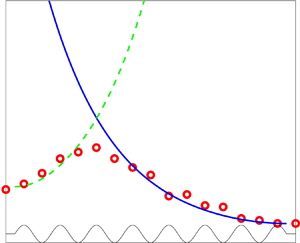Article contents
Upstream-propagating waves induced by steady current over a rippled bottom: theory and experimental observation
Published online by Cambridge University Press: 21 January 2021
Abstract

We theoretically and experimentally investigate the mechanism underlying the generation of upstream-propagating waves induced by a steady current over a horizontal bottom with a patch of sinusoidal ripples. By considering the triad resonant wave–ripple interactions involving two unsteady wave components (which have the same frequency but different wavenumbers) and one bottom ripple component in the presence of a steady uniform current, we derive the general condition under which unsteady upstream- and/or downstream-propagating waves can be induced. The frequency and wavenumbers of the induced propagating waves are given by the triad resonance condition in terms of current speed, water depth and bottom ripple wavenumber. By means of a multiple-scale perturbation analysis, we obtain the nonlinear amplitude evolution equations governing the spatio-temporal evolution of resonance-generated waves. Based on these equations, we find that the amplitude of the generated upstream-propagating waves is dramatically amplified when the associated triad resonance occurs in the neighbourhood of the critical current speed/frequency (corresponding to zero group velocity of unsteady waves in the presence of a current). A series of laboratory experiments in a long wave flume with wide ranges of current speeds and water depths are conducted to verify the theory. The experiments confirm the observation of the phenomenon of upstream-propagating wave generation in a steady flow over a rippled bottom. In particular, the experimental measurements of the kinematics of upstream-propagating waves as well as the critical flow condition for the observation of such wave generation compare well with the theoretical prediction.
- Type
- JFM Papers
- Information
- Copyright
- © The Author(s), 2021. Published by Cambridge University Press
References
REFERENCES
- 14
- Cited by



